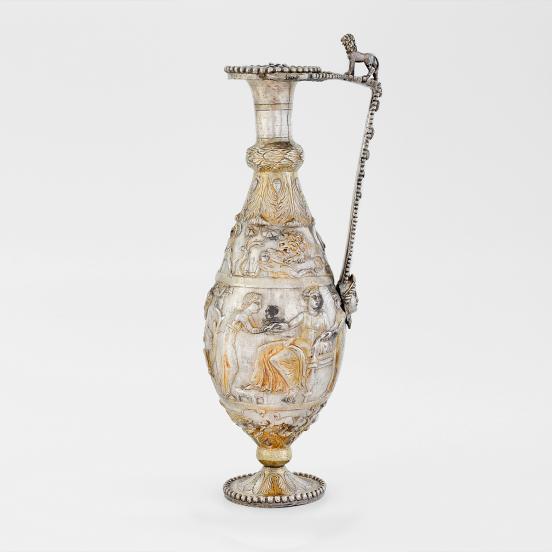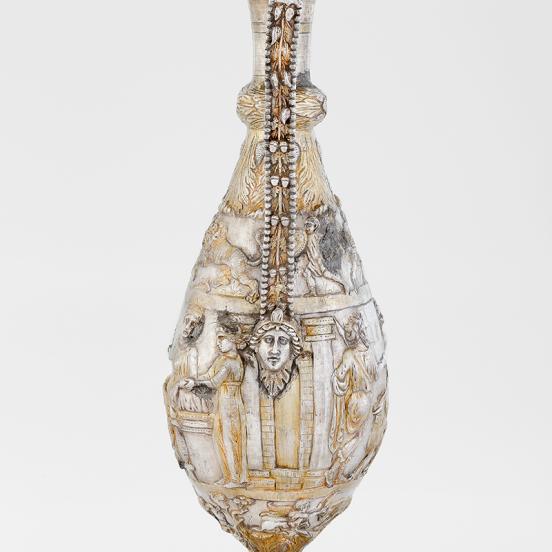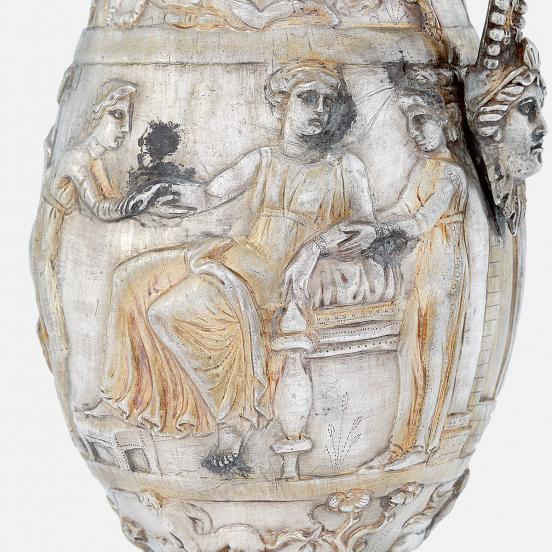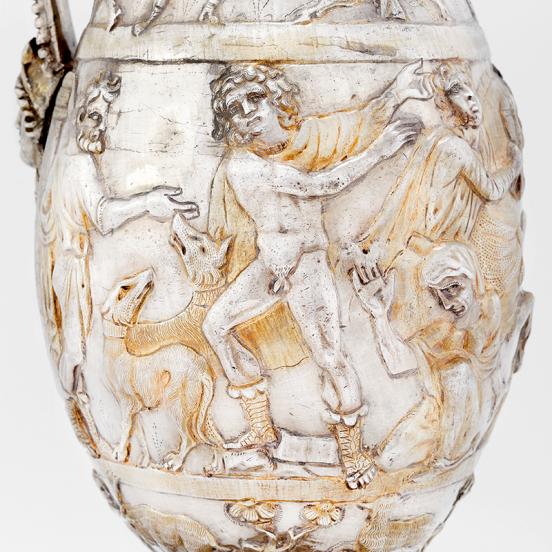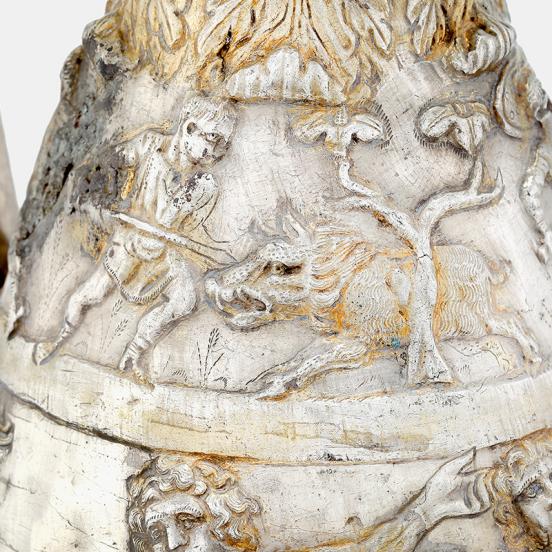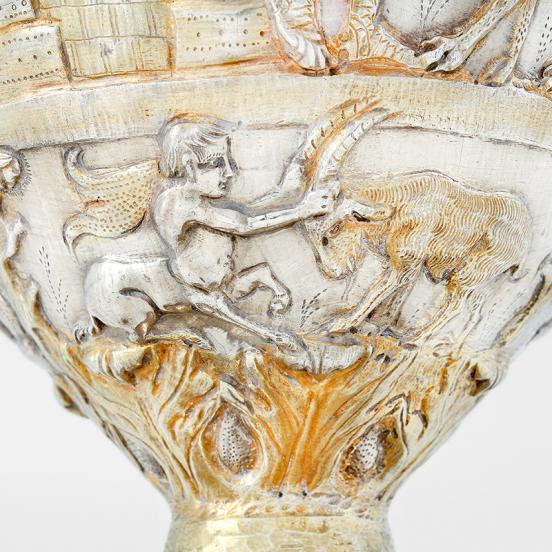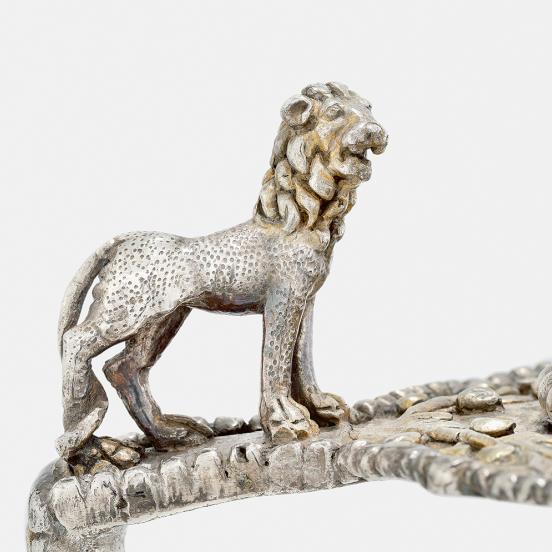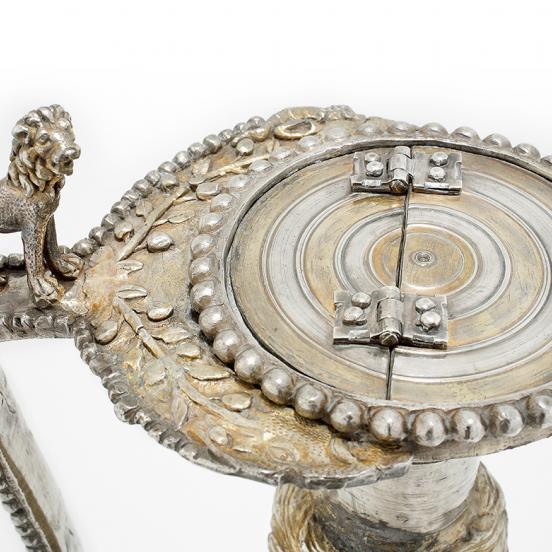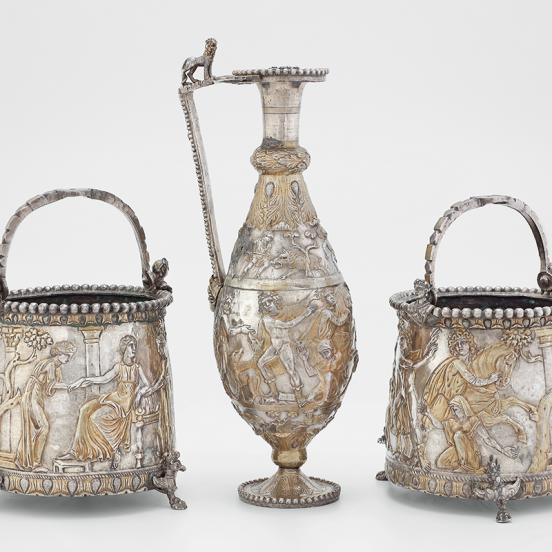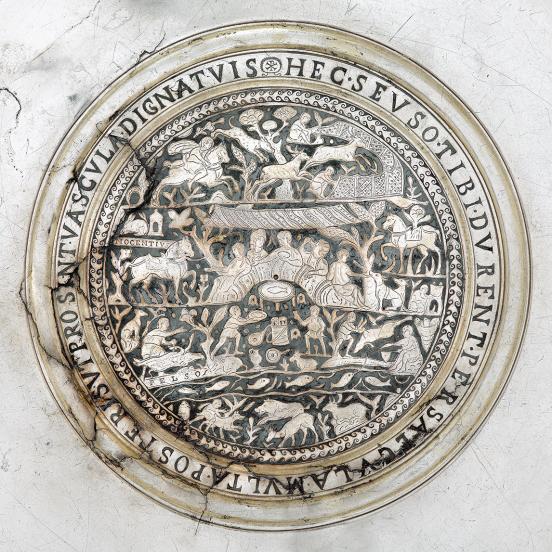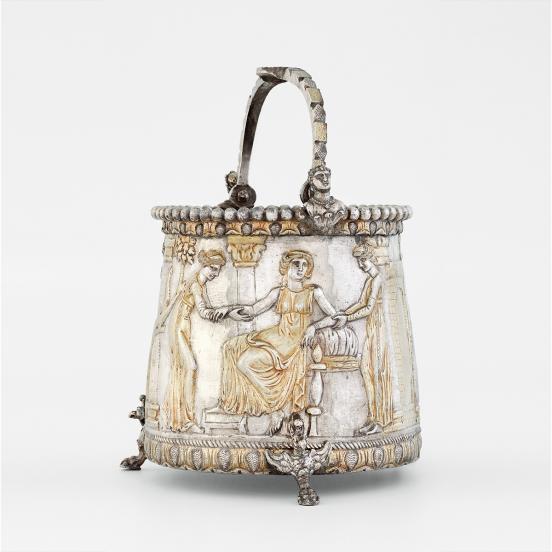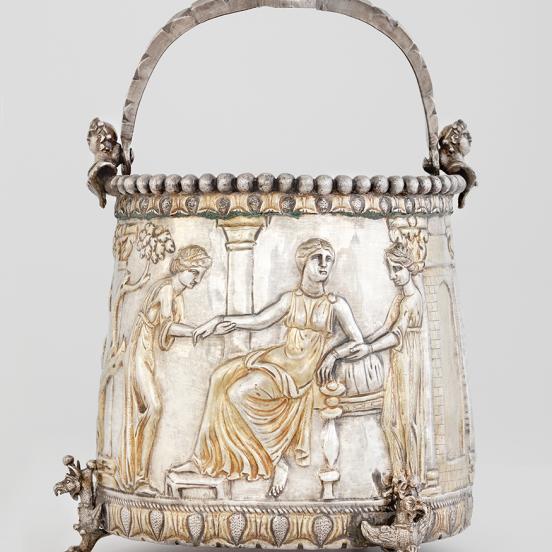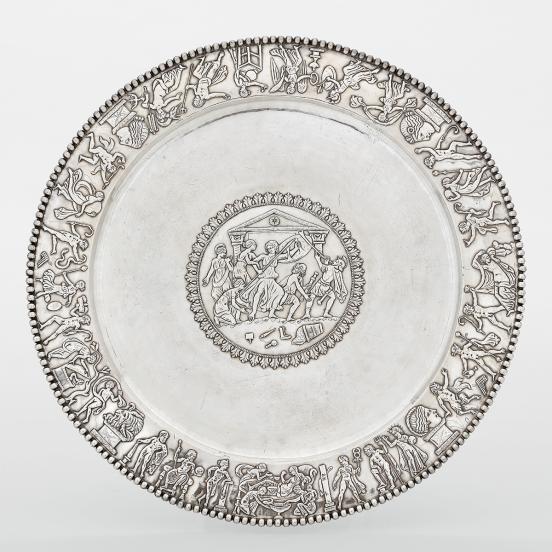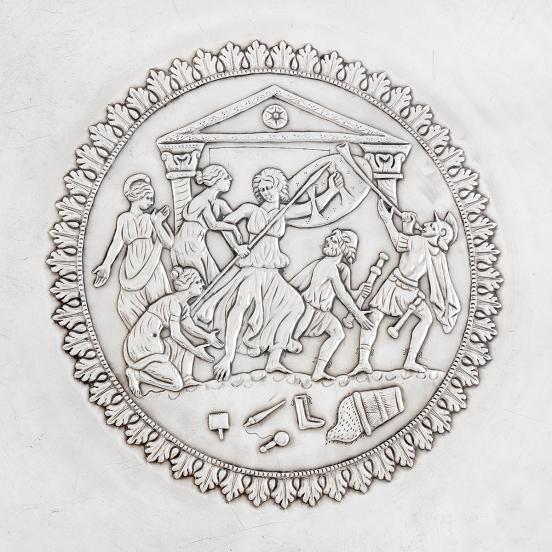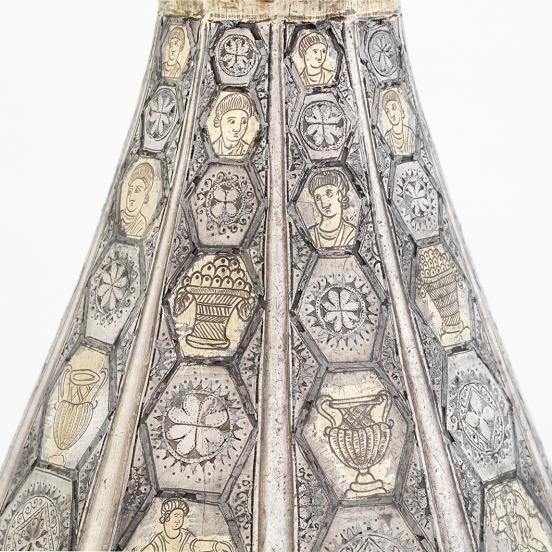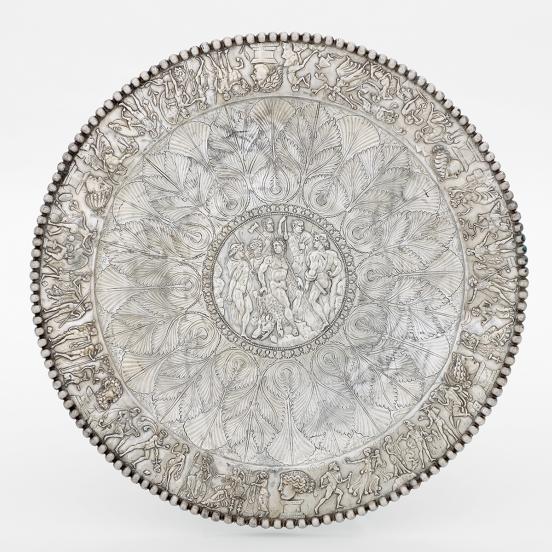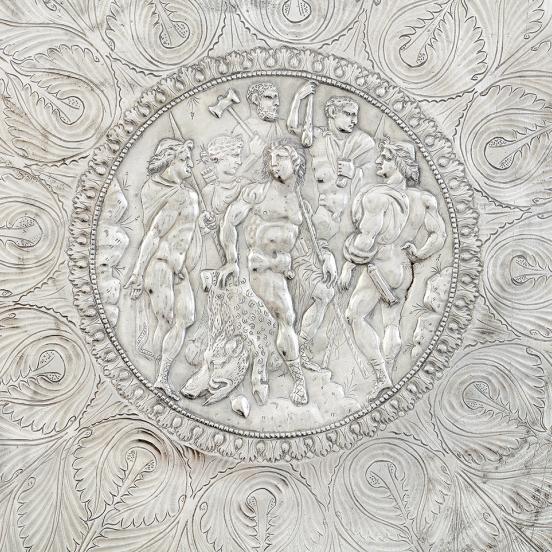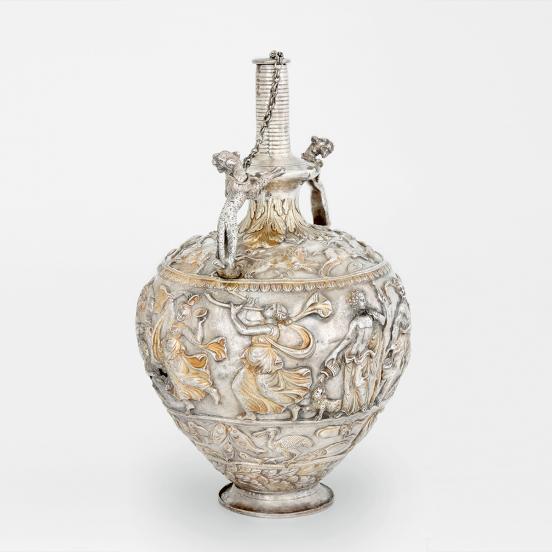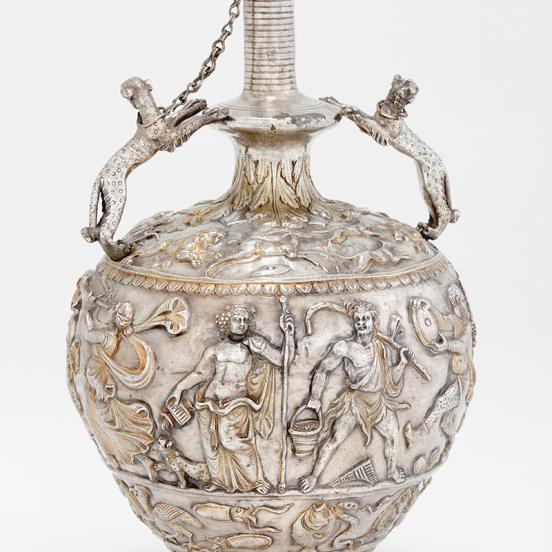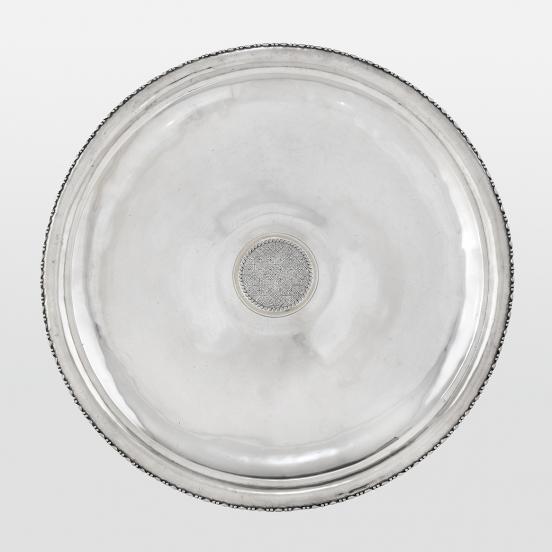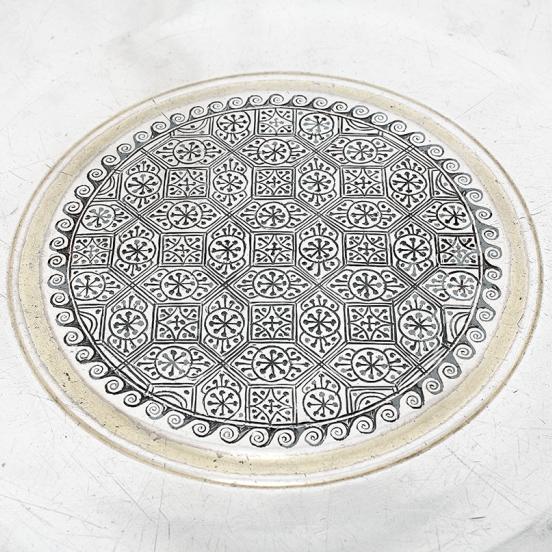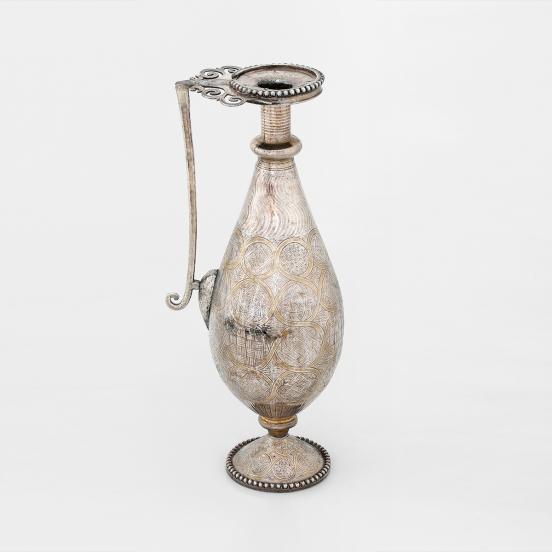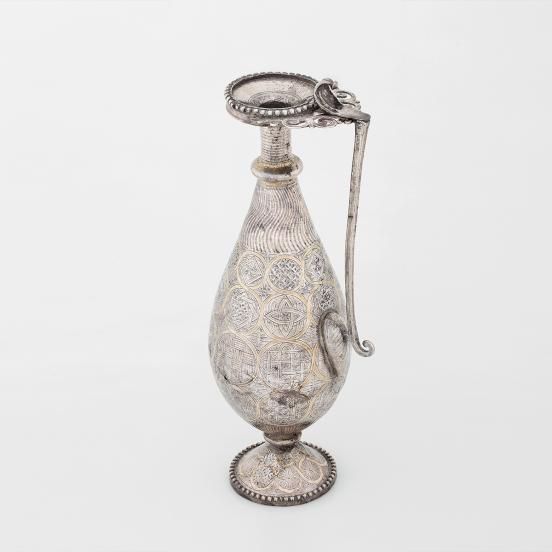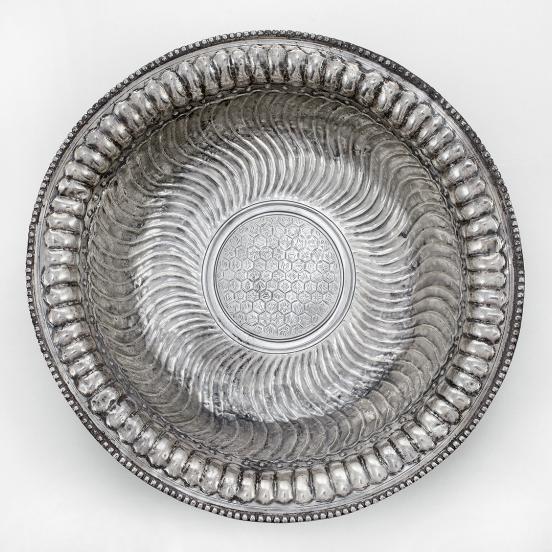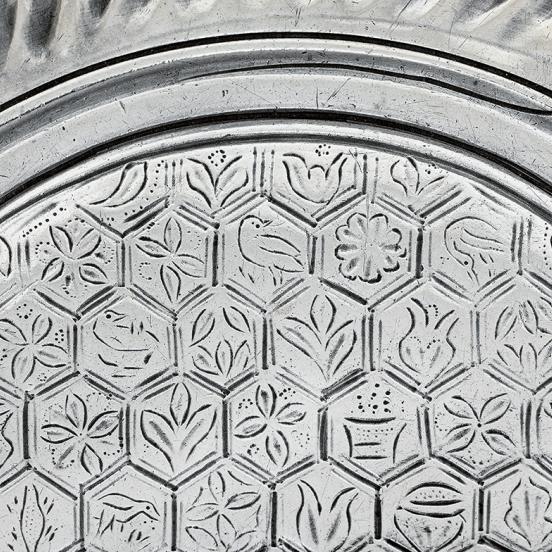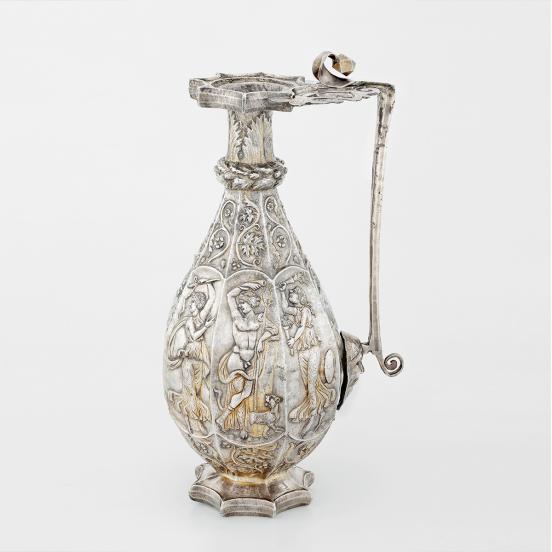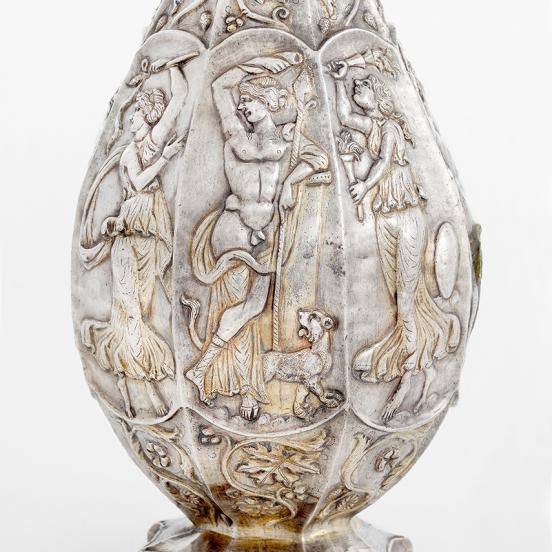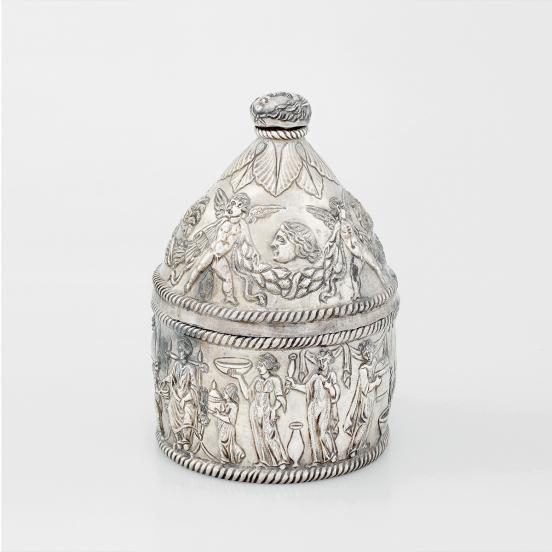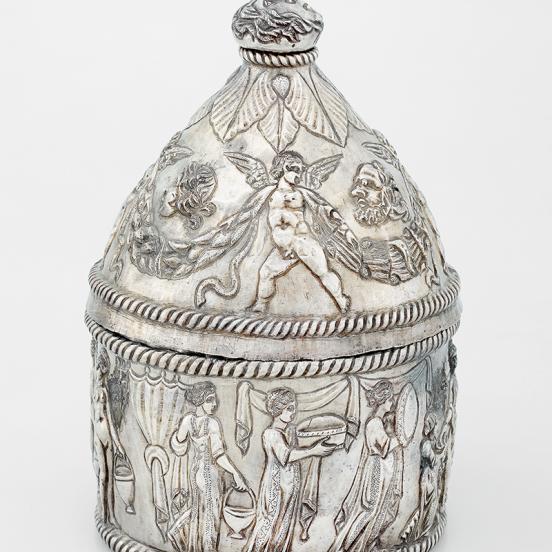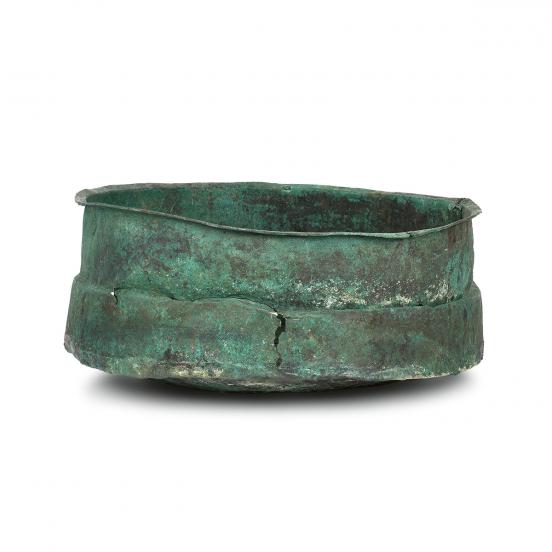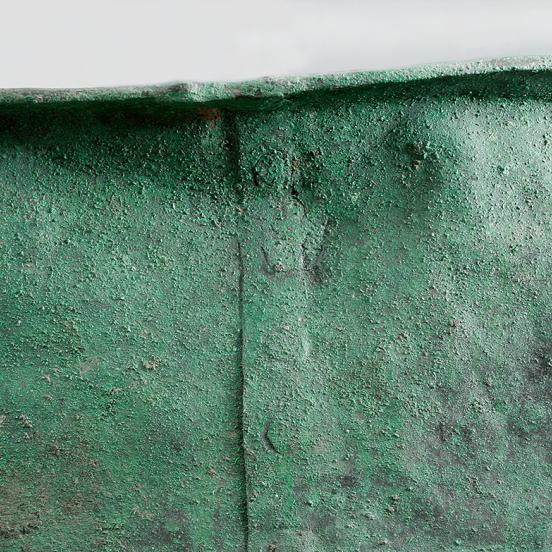The Hippolytus ewer
The pair of situlae and the ewer, which are decorated with scenes from the story of Hippolytus and Phaedra, presumably made up a set. On all three vessels the same two scenes of the story also written by Ovid can be seen, but they are represented in different styles on each vessel. One scene shows Phaedra suffering from her love for her stepson, sunk in a chair surrounded by her servants. The other scene, which is separated from the former by architectural elements such as a pillar and a vaulted gate, shows Hippolytus getting ready for hunting. He has already received Phaedra’s love letter from her old nursemaid, but throwing it on the floor he refuses his stepmother’s love.
The entire surface of the situlae is decorated with scenes of reliefs. Both stand on three feet each forming gryphons, and male busts can be seen on their handles.
Adjusted to the shape of the vessel, the scenes of the story on the Hippolytus ewer can be seen only in the middle zone. It is framed by a frieze representing a hunt for wild boar and lion above, and by centaurs hunting for animals below. The handle is also decorated richly: at the bottom a female mask conceals its joining to the body of the ewer. The entire length of the handle is ornamented with an oak branch covered by acorns and with goat’s heads at the rim of the ewer. A finely crafted gilded figure of a lion shaped from solid silver stands on the top of the ewer’s handle as a thumbpiece. Acanthus leaves were engraved on the foot of the ewer and its lid can be opened with hinged joints.
The traces of gilding can be well detected on all three vessels.

